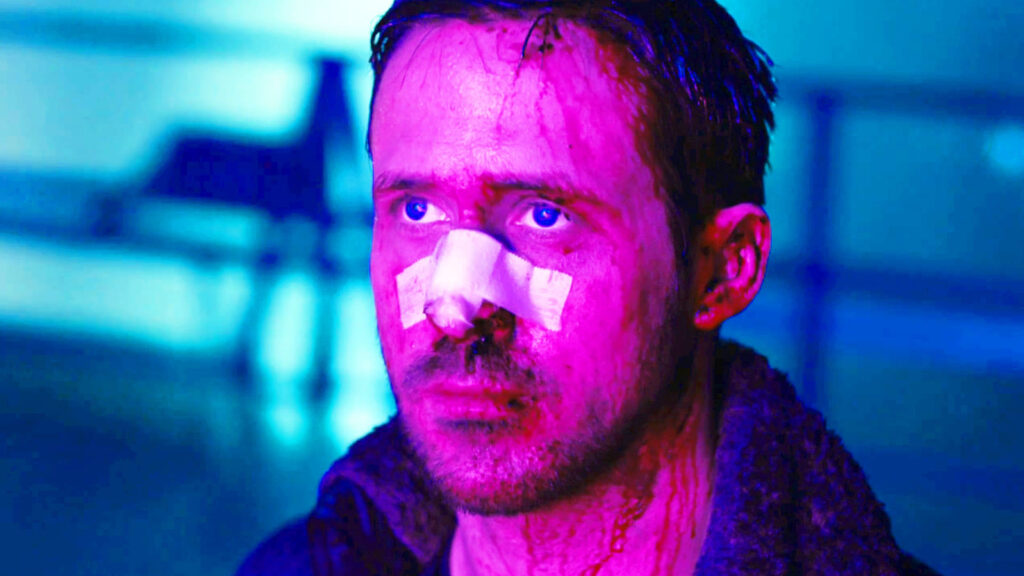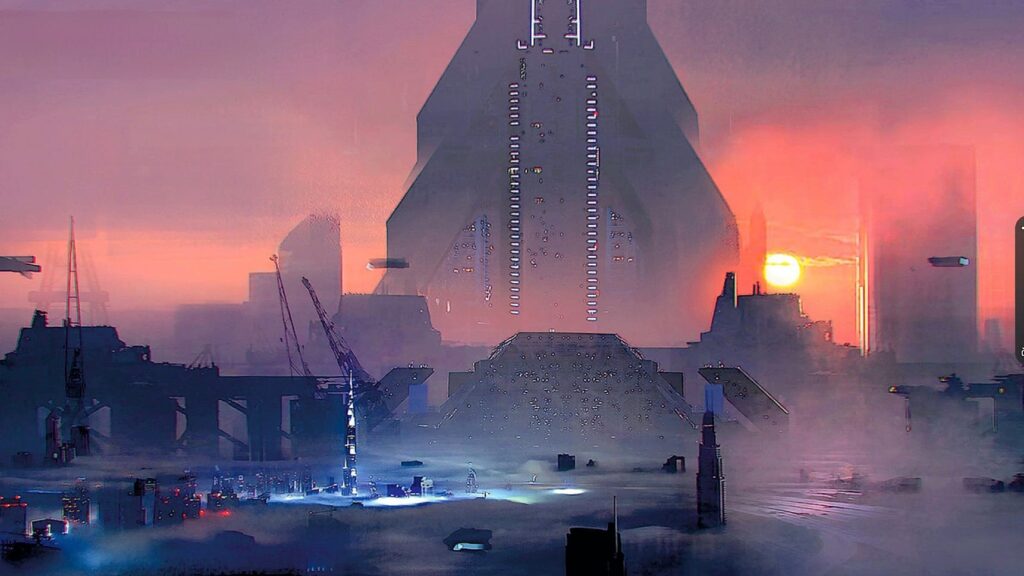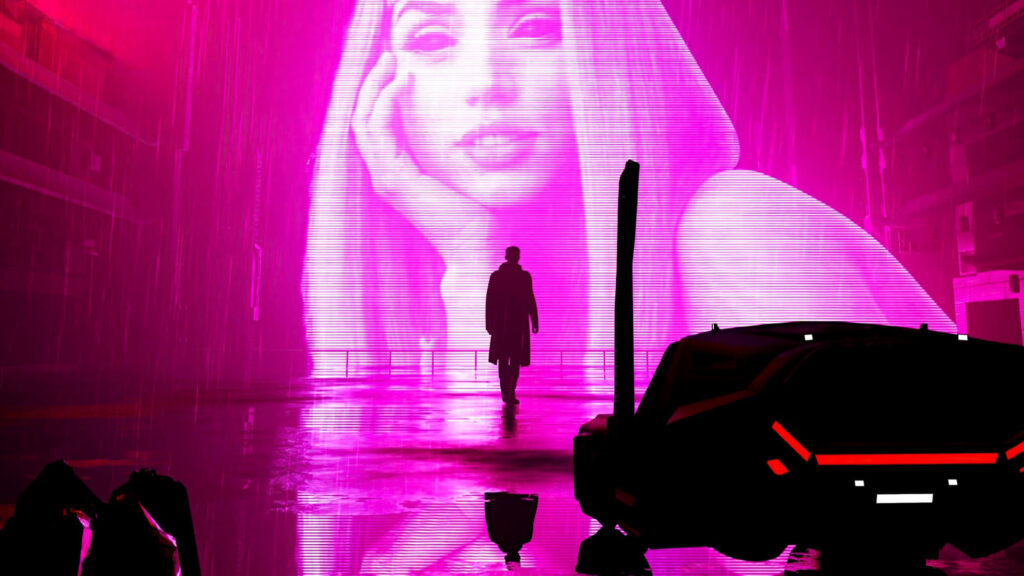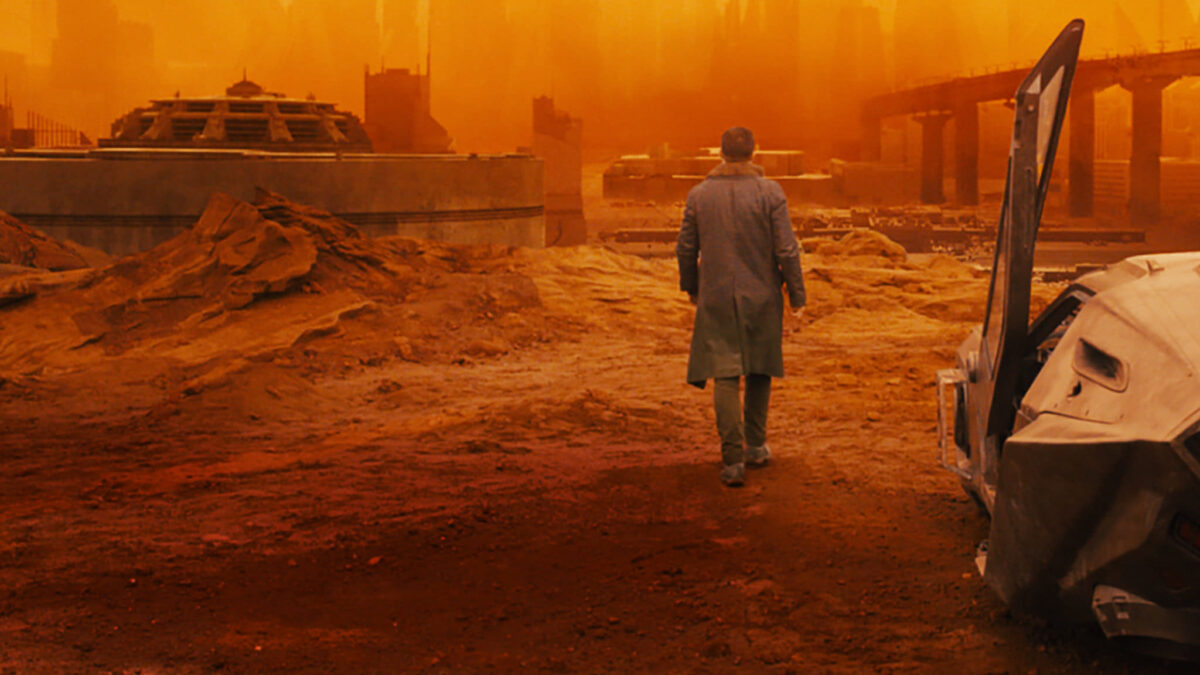Mere data makes a man
There are about a dozen reasons that Blade Runner 2049 should not work. The obvious one is that Blade Runner is not exactly a movie begging for a sequel. It has an ambiguous ending and an open-ended question on the person-vs.-replicant nature of Deckard, but those are left unresolved very intentionally. Frankly, it’s tough to imagine any follow-up with Deckard to do anything but tarnish the original. Hold that thought.
Another reason that Blade Runner 2049 should not work is because Denis Villeneuve had not, prior to this film, suggested he had the capacity to make a film of the storytelling depth and precision that a follow-up to Blade Runner would require. To be fair, Arrival, the film he made immediately before it, is the closest he had come, so there’s at least an upward trajectory in place. But his modus operandi is a messy stew of setup, then a 2-by-4 across the forehead for a finale — often satisfying when the credits roll, occasionally frustrating in real-time, rarely offering a complete cinematic vision. He can do style and sweep, but the prospect of Villeneuve tackling a project requiring the delicate touch and unique flavor of a Blade Runner sequel seemed a likely recipe for disaster.
And the third-biggest reason that this film should not work is that it’s almost impossible to imagine a film that honors the immersive visual pleasures of the original, a towering achievement of production and set design and cinematography. If nothing else about Blade Runner sticks, it’s the way the movie feels just looking at it in motion.

On top of those three, there are plenty of reasons this movie could and should have failed, and yet it hasn’t. Blade Runner 2049 is a great film. Genuinely great. I almost can’t believe it. It gets around the sheer lunacy of being a Blade Runner sequel by crafting a totally separate scenario in the same world, with a new protagonist and a fresh maker-vs-man dilemma that still feels in spirit to the original.
As for Villeneuve, he unlocks a directing capability in this film that he did not previously indicate he had in him except for glimmers at a time. There are still some story loose ends, a perpetual Villeneuve issue, but they are better-hidden and largely unproblematic. That he sustains Blade Runner 2049 at a gripping level for the near-entirety of its 163 minutes is a minor miracle.
And for the last question, how to make a movie that is a visual achievement worthy of Blade Runner’s legacy? 2049, of course, doesn’t reach the original, but it goes further (and stranger) than we could ever have hoped. The trick was to unite a world-class set of visionary designers led by the greatest working cinematographer, Roger Deakins, at the peak of his power and giving him free reign to innovate some of the most brilliant and striking sci-fi vistas and environments ever put to celluloid. No biggie.

The story this time follows a new replicant hunter, named “K” (Ryan Gosling). Unlike the original Blade Runner, this protagonist is explicitly a replicant himself. Any identity ambiguity this time around comes from the mirror angle of the original: Is this android perhaps more human than he initially appears? Unlike Blade Runner, though, (at least in my reading of each film) this is pretty definitively answered in Blade Runner 2049.
Gosling is, at this point, not the worst candidate for “this generation’s Harrison Ford”: a brutally handsome, reliably charming leading man who can do comedy, drama, and action. Both have a knack for finding great and/or massive films to be in. Gosling hasn’t starred in quite so many iconic franchises and genre films as Ford, but he’s getting there. Both have been in stone cold masterpieces, both always make their movies better, and both perfectly toe the line of playing variations of themselves while still bringing something unique to each role. Gosling is indeed excellent here, offering a pensive take on a replicant searching for some inner android humanity while still kicking ass.
After a terrific opening scene in which K hunts down a replicant played by Dave Bautista, K discovers that a replicant has secretly given birth, something previously believed to be impossible. Replicants having babies is apparently both believed technically impossible (though it’s never explained why a functioning uterus is more complicated than a sentient brain) and highly dangerous: just like Jurassic Park, if these things are reproducing in the wild, they can’t be tightly controlled by human masters.

K spends the rest of the movie trying to track down the replicant baby and its parents — ostensibly for the sake of an official investigation, though also as part of his own actualization. Meanwhile, businessman god figure Niander Wallace (Jared Leto) directs his replicant assistant Luv (Sylvia Hoeks) to keep tabs on K in order to find and exploit this chosen one child. Leto is kooky and delightful here, bringing a heightened fun to the billionaire villain that was missing from Joe Turkel’s Eldon Tyrell in the original.
I don’t think it’s really a spoiler to reveal that K ends up crossing paths with Deckard in the second half of this film. (I mean, Ford is in the poster on Letterboxd, so it shouldn’t be a surprise to anyone.) This is by far my least favorite part of the film. It would have been sufficient and reasonable to mention Deckard and let him play a role in the backstory. Giving Deckard and Rachael (Sean Young) prominent roles in this story is unnecessary fan service that sucks some momentum out of a film that could have used some trimming. Blade Runner 2049 clocks in at about 2 and three-quarters hours, and even though it moves briskly for such a runtime, some restraint would have helped, and cutting out the old-heads is where you could start. Deckard and Rachael don’t really add much to the story that couldn’t have been conveyed elsewhere, though I do really like the scene that Leto, Ford, and Young share.
It’s that bit of padding and shoehorning in of past figures that lowers Blade Runner 2049 from being one of the decade’s best films to just one of the year’s best. Deckard himself was never as important to his story as Han Solo was to Star Wars; he was merely a cipher to one of the great explorations of the meaning of personhood in modern society, so it’s not like this wouldn’t have been a proper Blade Runner film without him (though the Warner Bros. marketing department might have argued otherwise).
There is one aspect of Deckard and Rachael’s appearances that I am grateful about, though. Blade Runner 2049 goes out of its way not to do much to undermine or rewrite Deckard as we knew him in the original: the crucial replicant-vs.-man ambiguity, such that you might believe it exists in the first place, is thankfully untouched. We don’t really learn anything about the characters, their pasts, or their futures except as it directly informs Blade Runner 2049’s arc.

It’s really incredible how visually stunning this film. Deakins offers a strong contender for my favorite cinematography of the 2010s with tremendous vision and some really innovative touches. A few settings have colors palates and lighting that render the film more as a tinted black-and-white film than a color film. I doubt any viewer will quickly forget the yellows and oranges of this film’s Las Vegas: It offers a toxic, arid noir patina like a sun-aged, sepia-toned photograph of Gatsby-style decadence from the long-lost jazz age. Indoors are flooded with blue-green as if the entire world is lit from a mainframe terminal. Long shot exteriors glow with eerie sunrise colors or haunting, empty grays as the mood requires. Masterpiece stuff.
The world is filled with world-class production design from Dennis Gassner, who constructs some pheneomenally interesting sets and details, modernizing the futurism-classicism duality of the original while still making it feel whole with the franchise’s aesthetic. It’s never quite so busy or beautifully chaotic as the city streets of Blade Runner, but it’s still inspired and worthy of the Oscar nomination it received.
A combination of the worldbuilding, visual design, and carefully-sculpted narrative by Villeneuve result in a deeply immersive film: Like any detective story, it unfolds with discursions, but each one is richly compelling and essential to the tone. As the tension rises, so does the action. It’s only during aforementioned detour with Deckard that it the gas leaks out of a balloon a bit.

The expansion of the “what is a man, and how can he face his maker” theme so poignant in the original is the introduction of sex and birth as the conduit and union between two entities. The ways in which one can be a lover are explored, as are the ways one can be a parent. Many of the key figures of this story are women, and each offers a lens onto the ways hyper-industrial society views (and inevitably consumes and destroys) the fairer sex. Some critics have misguidedly accused Blade Runner 2049 of being misogynist for depicting such a dystopia, but it’s pretty clearly a deconstruction of such: Women become Madonnas and whores, dehumanized as they fulfill their lot in life. Ana de Armas’s Joi, a sex assistant AI, provides some compelling thematic counterweight to the ideas swirling around the story: Her personhood is even fuzzier than the rest of the characters’; her fate more jarringly annihilative than the others’, too. This thread is assisted by a best-in-show performance from Armas, who is brilliantly believable as a facsimile human that you’d still fall in love with and project a soul upon despite her ever-present artificiality.
So while the central questions of Blade Runner 2049 are not quite so elemental and resonant as those of Blade Runner’s, they are their logical extensions, and just as enrapturing: Adam’s story only got interesting when Eve showed up, and the rest of the Bible wouldn’t have been possible without her. In Blade Runner 2049, the quest for the womb becomes a quest for the self, and just like the child whom orphanage records show split into two, one boy and one girl, so K’s journey brings him to the blurry boundary of that which separates male and female; that which separates dreams from reality; and that which separates man and machine.
Is It Good?
Exceptionally Good (7/8)
Follow Dan on Letterboxd or Twitter. Join the Discord for updates and discussion.


2 replies on “Blade Runner 2049 (2017)”
I wonder if the key difficulty in engineering a Replicant that can reproduce the old-fashioned way is that they are very carefully engineered from the start to be sterile? (To such a degree that it effectively requires re-engineering their systems from scratch to overwrite).
I’m in a very similar space to you, vis-a-vis Harrison Ford’s inclusion. He’s giving a perfectly fine performance, but his scenes are the moments that this feels like a “legacy sequel”, rather than a separate, great film that happens to be set in the same universe as Blade Runner.